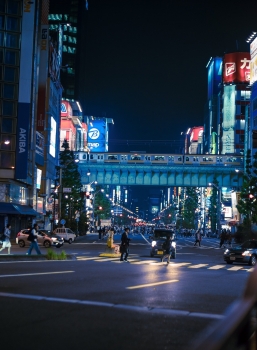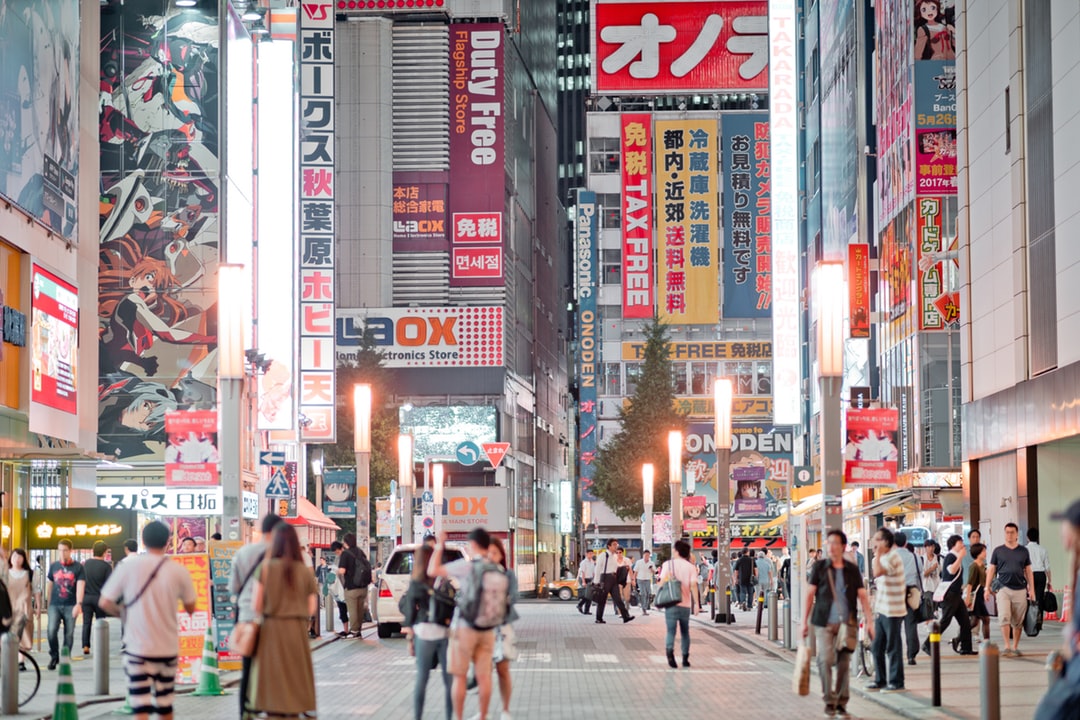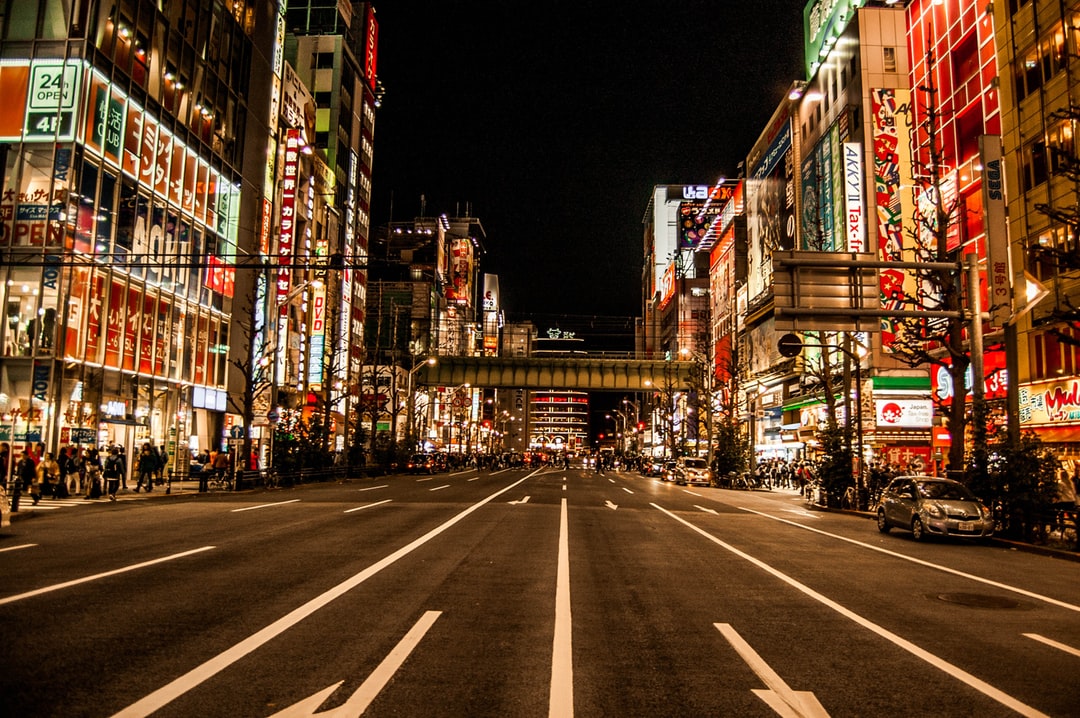Akihabara is the household name of an area surrounding the Akihabara Station in Chiyoda ward in Tokyo, Japan. The administrative area referred to as Akihabara belongs to the Kanda-Sakumacho and Sotokanda districts in Chiyoda. Even though there is another administrative district further North of Akihabara Station known as Akihabara in Taito ward, it is not the same place where people call Akihabara in general.
The name Akihabara is a short form of Akiibagahara – autumn leaf field – that comes from Akiba, named after the god a firefighting shrine constructed in 1869 when a fierce fire destroyed the area.
Shortly after the end of the World War II, Akihabara was nicknamed the Akihabara electric town (Akihabara Denki Gai). It was so because the area had become a key shopping center for an assortment of household electronic equipment as well as a post-war black market.
Today, Akihabara is perceived as an Otaku cultural center and a significant shopping center for anime, manga, computer accessories, and video games. Icons from popular manga and anime are displayed often on the shops in the region, and various maid cafes are spread throughout the district.
Geography
The main part of Akihabara is situated on the street located on the west of Akihabara Station, where significant shops are located as well. While the electronic shops are based on the west of the Station, the manga and anime shops, as well as the cosplay café, are found on the North.
The area referred to as Akihabara, stretches towards another district in Chiyoda ward called the Sotokanda ( west side of the station comprising of the electric town), Kand-Sakumacho ( the southeast part of the station) and Kanda-Hanaokacho (the east exit). The administrative district in Taito ward also called Akihabara borders Sotokanda in the middle of Akihabara and Okachimachi stations.
History
The region that is currently called Akihabara was once closer to the city gate of Edo and provided a route at the middle of the city and northwest Japan. As a result of this aspect, the area became the home of various tradesmen and craftsmen, in addition to some middle-class samurai. During the 1869 fire breakout that brought down the entire establishments, the people saw it necessary to replace the buildings in the area with a shrine in an attempt to avert future fires. The shrine was referred to as Chinkasha (now called Akiba Shrine), a name that means a fire extinguisher shrine.
The locals derived the name Akiba from a deity that was believed to have the power to control fire. The region around it became Akibagahara and now, Akihabara. In 1888 after the Akihabara Station was established, the shrine was transferred to Taito ward where it still survives till this day.
Akihabara station was opened in 1890, since then, it was transitioned into a critical freight transit point that promoted the growth of fruit and vegetable market in the district. Towards the 1920s, the station realized a massive influx of passengers after a public transport service was opened in the area. The black market thrived after the World War II due to the lack of a stable government. Even so, the disconnection between Akihabara and a government authority at the time had a positive impact. For example, the district developed as a significant city market and offered an ideal atmosphere for entrepreneurship to thrive.
During the 1930s, the favorable conditions for business growth in Akihabara promoted the area into a future-oriented market region that specialized in household electronics including refrigerators, washing machines, stereos, and televisions, earning the Akihabara the name “Electric Town.”
While the household electronics started to lose their futuristic status at around the 1980s, most shops in Akihabara shifted focus to home computers at a period when hobbyists and specialists only used them. This new specialty gave birth to a new type of consumer, computer otaku or nerds. The Akihabara market naturally accommodated the new customer base that focused on video games, manga, and anime. Since then, the connection between otaku and Akihabara has flourished significantly to the point that the global community refers the area as a center for otaku culture, and even some otaku perceives Akihabara as a sacred location.
Otaku culture
Otaku culture has influenced and shaped Akihabara’s business community and buildings that now reflects the real interests of otaku and has given the district a distinct image that is known worldwide. Akihabara attempts to create an environment that is closely related to the anime and gaming worlds of specific client’s interests.
A walk on the streets of Akihabara reveals an area covered by manga and anime icons, as well as cosplayers that are lined along the sidewalks handing out advertisements, particularly for maid cafes. One of the top-selling contemporary musical arts in Japan – the idol group AKB48 – runs its theater in Akihabara, where its name is derived.
Particular conventions and events in Akihabara grants manga and anime fans regular opportunities to interact with the individuals behind the creation of the works. They follow it closely to strengthen the connection among the people in the region and the influence of otaku culture.
The buildings are designed purposely to create a specific atmosphere that draws in otaku. More to the point, architects design Akihabara’s stores to be more opaque and closed to reflect the overall intention of many otaku to reside in their anime worlds instead of displaying their interests to the general public.
Akihabara’s hand in the formation of a free market has promoted a significant amount of amateur work to establish a passionate audience in the otaku who visit the area frequently. Amateur manage – Doujinshi – or formade manga situated on a manga game has been growing in the region since the 1970s, a time when publishers started to drop manga that was not yet fit for broader markets.
Wrap up
Overall, Akihabara is an ideal location that holds a significant amount of history, and deep secrets concerning the locals in Tokyo, Japan from ancient times up till now. As the first electric city and being the heart of otaku culture, Akihabara is worth a visit.
Have you checked out my last article on trendy areas in Tokyo? If not then click here.


